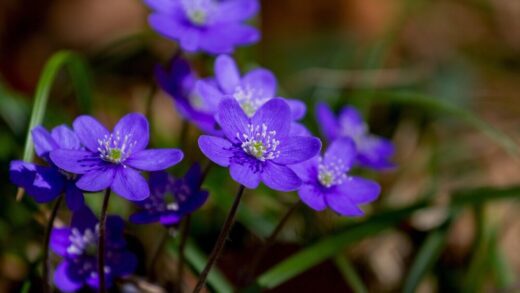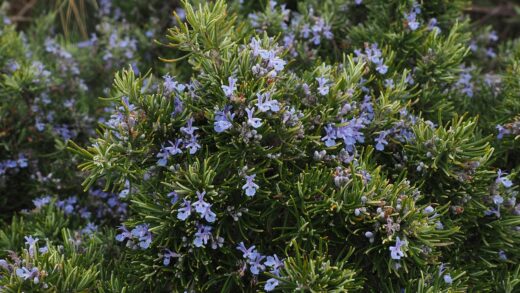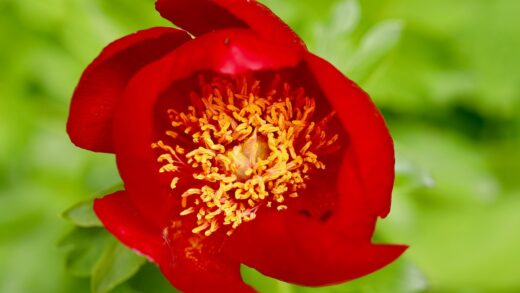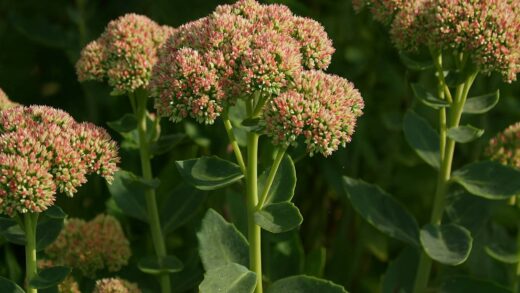The successful wintering of pineapple sage is entirely dependent on understanding its tender nature and the specific climate in which you are gardening. Native to the warm regions of Mexico, this plant has very little tolerance for frost and freezing temperatures. In regions where winter temperatures remain mild and rarely dip below freezing, categorized as USDA hardiness zones 8 through 11, pineapple sage can often be treated as a reliable perennial. However, for gardeners in colder climates, special measures must be taken to preserve the plant through the winter, as a hard frost will typically kill the top growth and, in colder zones, the root system as well. Planning ahead before the first frost arrives is crucial for ensuring you can enjoy this fragrant herb year after year.
In areas that experience only light, infrequent frosts (generally zone 8), the plant can usually be overwintered outdoors in the ground with some basic protection. The key is to insulate the crown and root system of the plant from the cold. After the first light frost has caused the foliage to die back, the stems can be cut down to about 10-15 centimeters from the ground. Following this, a thick layer of organic mulch, such as straw, shredded leaves, or wood chips, should be applied over the base of the plant. This mulch acts like a protective blanket, moderating soil temperatures and preventing the ground from freezing solid around the roots. This simple step is often enough to ensure the plant’s survival and its vigorous return in the spring.
For gardeners in zones 7 and colder, leaving pineapple sage in the ground over winter is not a viable option, as the prolonged freezing temperatures will kill the plant entirely. In these regions, there are two primary strategies for overwintering: bringing the plant indoors as a houseplant or taking cuttings in the autumn to propagate new plants. Both methods are highly effective and allow you to preserve your specific plant’s genetics for the following season. The choice between the two often comes down to the amount of indoor space and light you have available during the winter months.
Regardless of the method chosen, timing is of the essence. All preparations for wintering, whether it involves applying mulch, digging up the plant, or taking cuttings, should be completed before the first hard frost is forecast. Waiting too long can result in a damaged or overly stressed plant that is less likely to survive the winter, even with protection. Monitoring your local weather forecast in mid to late autumn is therefore a critical task for any gardener wishing to save their pineapple sage.
Understanding its cold hardiness limitations
Pineapple sage’s ability to survive the winter is directly linked to its genetic heritage. Originating from high-altitude, subtropical regions, it is adapted to a climate without prolonged periods of freezing weather. This makes it a “tender perennial,” a term used for plants that can live for multiple years in warm climates but behave as annuals in areas with cold winters. Its official USDA hardiness rating is typically zones 8-11. This means that in these zones, the plant’s root system is generally capable of surviving the winter temperatures and sending up new growth in the spring, even if the top foliage is killed back by a frost.
The term “frost” itself requires some understanding. A light frost, which occurs when temperatures dip to around 0°C for a short period, will typically damage or kill the leaves and tender stems of pineapple sage. However, the thicker, woodier base of the plant and the roots underground may remain unharmed. A “hard freeze,” where temperatures drop significantly below freezing (e.g., -4°C or lower) for several hours, is much more dangerous. This can freeze the ground solid, killing the crown and the root system, which is why in-ground survival is not possible in colder zones.
Even within its designated hardiness zones, microclimates can play a significant role in a plant’s survival. A pineapple sage planted in a sheltered location, such as against a south-facing brick wall, will be in a much warmer spot than one planted in an open, exposed area. The wall absorbs solar radiation during the day and radiates it back at night, keeping the immediate vicinity several degrees warmer. This extra protection can make the difference between survival and death in a borderline climate, potentially allowing a gardener in zone 7b, for example, to successfully overwinter a plant outdoors with heavy mulching.
Ultimately, the plant’s winter survival depends on the survival of its root system. As long as the roots and the crown (the point where the stems meet the roots) are protected from freezing solid, the plant has a chance to regenerate in the spring. This is the principle behind mulching in milder climates. For colder regions, the only way to protect the roots is to physically remove them from the frozen ground by digging up the plant and bringing it into a protected, above-freezing environment.
Preparing outdoor plants for winter
In climates where pineapple sage has a chance of surviving outdoors (zones 8 and warmer), a few preparatory steps in late autumn can greatly increase its odds. The process should begin as the weather starts to cool and before the first hard freeze. One key step is to reduce watering. As the plant’s growth slows in response to shorter days and cooler temperatures, its water needs decrease significantly. Continuing to water heavily can lead to waterlogged soil, which is more prone to freezing and can promote root rot during the dormant period.
After the first light frost has blackened the foliage, it is time to prune the plant back. Use clean, sharp shears to cut the stems down to a height of about 10 to 15 centimeters. Removing the dead top growth tidies up the garden and, more importantly, makes it easier to apply a protective layer of mulch directly over the plant’s crown. Some gardeners prefer to leave the dead stems in place until spring, with the theory that they can help trap insulating snow, but cutting them back is generally the more common and effective practice.
The most crucial step for overwintering in the ground is the application of a thick layer of insulating mulch. The goal of winter mulching is not to keep the plant warm, but to keep the soil temperature stable and prevent the repeated freezing and thawing that can heave a plant’s roots out of the ground. Apply a generous layer, at least 10 to 15 centimeters deep, of a light, airy organic material over the crown of the plant. Excellent choices for mulch include shredded leaves, clean straw, pine needles, or wood chips.
In the spring, it is important to know when to remove this protective mulch. Wait until the absolute last threat of a hard frost has passed. Removing the mulch too early can expose the tender new shoots that may be emerging to a late cold snap, which could kill them. Once the weather has reliably settled, gently rake the mulch away from the crown of the plant to allow the sun and warmer air to reach the soil and encourage the new growth to emerge.
Overwintering potted plants indoors
For gardeners in cold climates, bringing pineapple sage indoors is a popular and effective way to ensure its survival. The process should begin well before the first frost. Choose a day in late summer or early autumn to dig up the plant from the garden. Try to get as much of the root ball as possible to minimize transplant shock. It’s also a good idea to prune the plant back by about a third to a half at this time. This reduces the amount of foliage the stressed root system needs to support and makes the plant a more manageable size for an indoor setting.
Select a pot that is large enough to comfortably accommodate the root ball with a little room to spare. Ensure the pot has excellent drainage holes. Use a high-quality, sterile potting mix to fill the container. After potting the plant, water it thoroughly and place it in a shaded, protected outdoor location for a week or two. This transition period allows the plant to recover from the shock of being dug up and pruned before it is subjected to the further stress of moving indoors. During this time, it’s also wise to inspect the plant carefully for any pests and treat them before bringing it inside.
The ideal indoor location for an overwintering pineapple sage is a spot that is cool but bright. An unheated sunroom, a cool basement with a window, or a frost-free garage are often good choices. The plant does not need warm, household temperatures; in fact, cooler conditions (around 5-10°C) will encourage it to enter a state of semi-dormancy, which is less stressful for the plant. It does, however, need bright light. A south-facing window is ideal. If you lack a sufficiently bright location, supplemental lighting from a simple fluorescent shop light can make a huge difference.
Watering is the most critical aspect of care for an overwintering indoor plant. Because the plant is dormant or growing very slowly, its water needs are minimal. Overwatering is the number one cause of failure. Allow the soil to dry out almost completely between waterings, and then water just enough to moisten the soil. Do not fertilize the plant at all during the winter months. In the spring, when you see signs of vigorous new growth, you can gradually increase watering and begin to acclimate the plant back to outdoor conditions.
Taking cuttings as an insurance policy
Perhaps the easiest and most space-efficient method for overwintering pineapple sage, especially for those with limited indoor space, is to take cuttings. This propagation technique allows you to start fresh with small, vigorous new plants in the spring, rather than dealing with a large, dormant plant all winter. It’s a fantastic insurance policy that guarantees you will have pineapple sage for the next season, even if your attempts to overwinter the parent plant fail. The best time to take these cuttings is in late summer or early autumn, while the parent plant is still healthy and before it has been damaged by frost.
Select several healthy, non-flowering stems from the parent plant. Each cutting should be about 10-15 centimeters long. Use a clean, sharp knife to make a cut just below a leaf node. Carefully strip the leaves from the bottom half of each cutting. You can then root these cuttings in a jar of water or directly in a pot filled with a light, sterile potting mix. If using soil, dipping the end of the cutting in rooting hormone can increase the chances of success.
Once the cuttings are prepared, place them in a bright location out of direct sunlight. If you have them in water, change the water every couple of days. If they are in soil, keep the medium consistently moist but not soggy. Covering the pot with a clear plastic bag can help to create a humid micro-environment that encourages rooting. Roots should begin to form within a few weeks. Once a cutting in water has developed a good network of roots, or a cutting in soil resists a gentle tug, it has successfully rooted.
These small, rooted cuttings can then be cared for as houseplants through the winter. They take up far less space than a large, dug-up plant and can often thrive on a sunny windowsill. Water them when the top layer of soil feels dry, and provide as much light as possible. By the time spring arrives and the danger of frost has passed, you will have several well-established young plants that are ready to be planted out in the garden, giving you a significant head start on the growing season.




















